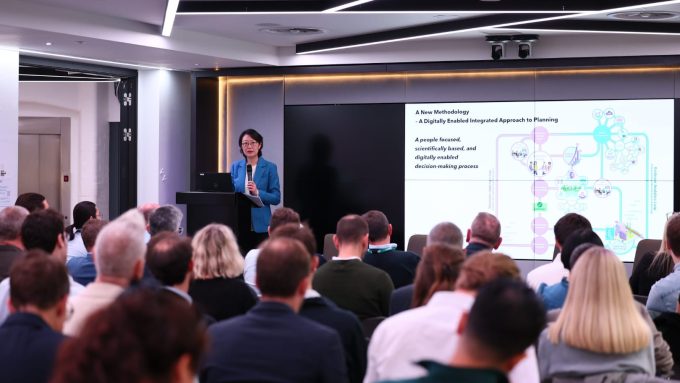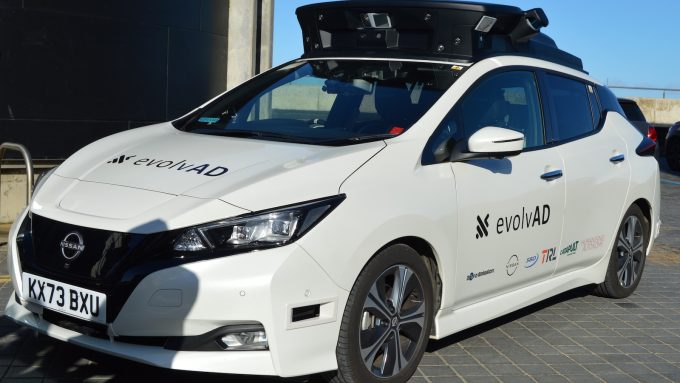
Maritime sector makes waves in Singapore

Ten thousand delegates from around the world came together under the title ‘Actions meet Ambition’ in April at Singapore Maritime Week, including myself and SME Investor Relations Manager, Yusuf Chadun.
Proceedings opened with an address by Singapore’s Minister for Transport who explained that Singapore – already a major port and bunkering facility – will be opening three more berths by next year to add to its current eight, as it plans to increase container throughput from around 38 million units a year to 65 million.
We heard that the port is keen to collaborate with and invest in global partners. This could be good news for the UK which already has several Memoranda of Understandings with Singapore and is delivering on innovation partnerships across different technology sectors including maritime.
Singapore has created a ‘living lab’ in the port to develop innovation, and is a globally recognised regulatory ‘sandbox’ with strong capabilities in maritime drones. The port has full 5G coverage across the site and its approaches, with access to specialist vessel design capabilities.
It is also involved in a digitalisation transformation programme involving the UK’s National Physical Laboratory along with the Alan Turing Institute and Amazon Web Services, which offers a generative AI suite used for fuel optimisation and carbon emission tracking.

The country’s Maritime Port Authority has also worked with the National University of Singapore to grow a maritime accelerator programme known as Pier 71, delivered by the Singapore Maritime Institute. It has supported 110 marine technology SMEs, with 62 companies investing £25 million.
To improve reliability, the port is focused on developing a cyber secure workforce and facilities, along with introducing a next generation of artificial intelligence for traffic management to permit higher volumes of vessels entering the port; from one vessel entering every three minutes to one every two minutes.
We also heard that Singapore is preparing for a multi fuel future, initially around methanol but expanding to include ammonia and hydrogen.
In terms of developing people Singapore’s maritime sector, Government and academia are working together to promote lifelong learning, including training for using alternate fuels.
During a British Consulate meeting it was discussed how the 2023 Green Economy Framework between Singapore and the UK is shaping trade and innovation in sectors such as maritime, to include a focus on low carbon energy technology and efforts to establish a carbon trading market.
Decarbonisation in focus
Highlights from day one of the conference included a focus on decarbonisation: the Marine Environment Protection Committee of the International Maritime Organization aims for a 30% reduction in port greenhouse gas emissions by 2030, rising to 80% by 2040 and achieving net zero by 2050. To help get there, it is promoting the use of electric harbour craft, and the bunkering of bio diesel, bio methanol, bio LNG (liquefied natural gas), ammonia and hydrogen by 2050.
From an investment perspective, it was said the sector needs time and support to grow the deeptech companies. There have been five years of capital deployed in a first investment wave, mostly from venture capitalists, but this has slowed considerably. New capital is needed, but the maritime market is thought to be too opaque for investors, with new entrants appearing sporadically. Demonstrating examples of possible long term returns could help build more trust among investors.
Day two heard that Just in Time approaches introduced for traffic management at Singapore port had saved 40,000 days of effort in unloading, and allows for vessels to enter the port every two minutes.
Maritime fuel emissions, it was said, need to fall by 85% by 2050 to keep to the 1.5oC rise being pursued under the Paris Agreement. With restrictions in the availability of biofuels, hydrogen based fuels including ammonia will be key to maritime decarbonisation.
I also attended seminars marking the launch of the Maritime Autonomy Assurance Testbed – a joint venture with the Maritime Port Authority, National Physical Laboratory and Lloyds Register to address a $10 billion market by 2030. The MAAT aims to drive confidence in technology through testing and data gathering, and is designed to promote collaboration across Government, industry and academia to usher in a new era of autonomy with driver assistance – and ultimately self-driving craft. New codes and standards are being developed for launch by 2028.

Singapore Maritime Week also saw the launch of a green shipping corridors governance report by C40 Cities, which aims to encourage investor confidence in vessels running on new fuels. Proposals for establishing green shipping corridors has risen from 21 in 2022 to 44 in 2023, and Connected Places Catapult is working to create routes in several locations including Merseyside, the Solent, Tyneside and the Dover Straits.
The largest potential green shipping corridor links Rotterdam to Shanghai and passes within 20 nautical miles of the Solent. Singapore, it was said, is also a key node for deep sea green sea corridors to destinations including San Diego, Los Angeles and Tianjin in China.
Key messages in the report support the ambitions of our Pulse project work undertaken with Liverpool and Belfast; in particular around building collaborations; addressing competitive behaviours, and allowing voluntary partnerships to form organically through trust and shared ambitions.
The UK had much to promote at the event, and we have an equally mature story to tell. Singapore is certainly a place to engage with and learn from, and we will continue to develop opportunities to grow into the ASEAN (Association of South East Asian Nations) market.
To my mind, the UK quickly needs to emulate what Singapore is doing to promote developments in the maritime sector by establishing an equally impressive network of demonstrators here.
Mark Wray is Connected Places Catapult’s Ecosystem Director for Maritime & Ports
Yusuf’s highlights from the event
Investment challenges and opportunities discussed at Singapore Maritime Week chimed with many of the issues faced by UK investors operating in a port environment, writes SME Investor Relations Manager, Yusuf Chadun.
But delegates on a panel session suggested that Singapore was often able to move more quickly to make investment decisions than we do in the UK.
As I started meeting investors, I learnt how the business community in Singapore is quite tight, how maritime stakeholders generally all know one other, and how the membership groups and associations for different parts of the sector – such as shipbuilders – meet frequently.
I met a couple of non-UK Catapult SMEs who had opened offices in Singapore to be able to better engage with maritime stakeholders in the region. From what I was told, establishing a Singapore office allowed them to pilot and trial their products very quickly as they could more easily work with multiple stakeholders concurrently.
At the conference exhibition, I was particularly interested to see an autonomous vehicle that can operate around ports and check cargo containers, different Virtual Reality systems used for training of staff, and a crane simulator used for training.





